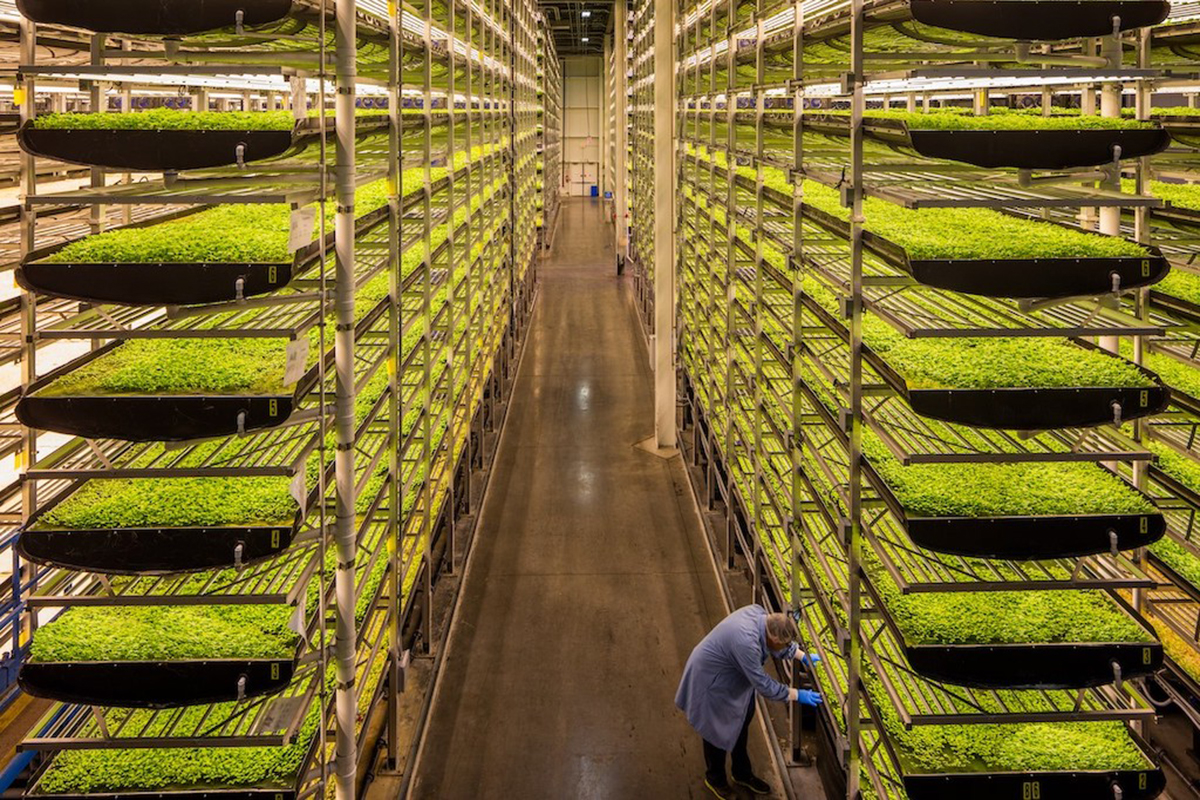Vertical farming is the practice of growing crops in vertically stacked layers. It often incorporates controlled-environment agriculture, which aims to optimize plant growth, and soilless farming techniques such as hydroponics, aquaponics, and aeroponics.

The main advantage of utilizing vertical farming technologies is the increased crop yield that comes with a smaller unit area of land requirement. The increased ability to cultivate a larger variety of crops at once because crops do not share the same plots of land while growing is another sought-after advantage. Additionally, crops are resistant to weather disruptions because of their placement indoors, meaning fewer crops lost to extreme or unexpected weather occurrences. Because of its limited land usage, vertical farming is less disruptive to the native plants and animals, leading to further conservation of the local flora and fauna.
Vertical farming technologies face economic challenges with large start-up costs compared to traditional farms. In Victoria, Australia, a “hypothetical 10 level vertical farm” would cost over 850 times more per square meter of arable land than a traditional farm in rural Victoria. Vertical farms also face large energy demands due to the use of supplementary light like LEDs.
Plant Grow LED light becomes the most significant component to help the growth of plants and crops in vertical farming. An effective Grow LED light can bring great benefit for the vertical farming. With the help of the LED light, vertical farming is able to produce crops year-round. It also allows for the production of a larger variety of harvestable crops happened in vertical farming by the imitation of sunshine effect.
So to choose a good Plant Grow LED light is very important to the host of vertical farming.
References
Some information is referred to Wikipedia, https://en.wikipedia.org/wiki/Vertical_farming

